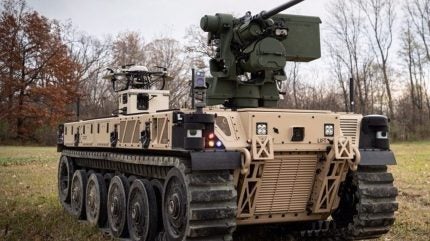
A Government Accountability Office (GAO) report published on 15 July 2024, finds that while the US Army putting new equipment into the field before sufficient facilities, personnel and training were ready, amid an intensifying efforts to develop and deploy modernised weapons and equipment at a faster pace.
The report highlighted that six new priority equipment items that were fielded with at least one incomplete planning element, and in many cases, three or more elements were not fully addressed. This led to situations where units may not have been adequately prepared to operate the new equipment, potentially impacting their effectiveness and safety.
The Army has committed $46.5bn to these modernisation initiatives, which are part of a broader Regionally Aligned Readiness and Modernization Model (ReARMM) strategy to ensure that deploying units are equipped with the most advanced weapon systems and equipment available.
The Integrated Air and Missile Defence (IAMD) system was designed to provide a more effective approach to air and missile defence, and included new sensors, command and control systems, and interceptors. However, the fielding of IAMD faced challenges due to incomplete planning in areas such as training and facilities. Units receiving the IAMD lacked proper training programs and the necessary infrastructure to fully support the new systems, leading to operational inefficiencies and potential readiness issues.
The Next Generation Combat Vehicle (NGCV) program included a variety of new and upgraded vehicles intended to replace aging platforms and enhance the Army’s ground combat capabilities. The fielding of NGCVs was expedited to meet urgent operational needs, but many units received these vehicles before the necessary maintenance facilities and training programs were fully established. This resulted in delays and additional costs as units had to adapt existing facilities and develop training protocols on the fly.
The Future Vertical Lift (FVL) initiative aimed to modernise the Army’s aviation capabilities with new helicopters and unmanned aerial systems that offer improved speed, range, and survivability. The rapid deployment of these systems was hampered by incomplete planning for personnel and training. Units received FVL aircraft without having the requisite trained pilots and maintenance crews in place, leading to initial operational setbacks and increased training demands.
The Long Range Precision Fires (LRPF) program focused on enhancing the Army’s long-range strike capabilities through new missile systems and artillery. While these systems significantly boost the Army’s offensive reach, they were fielded before comprehensive training programs and support facilities were fully developed. This incomplete planning led to challenges in effectively integrating LRPF into existing unit operations and required additional resources to address training gaps and facility upgrades.
This priority for network modernisation involved upgrading the Army’s communication and information systems to provide more robust, secure, and interoperable networks. The fielding of new network equipment was accelerated, but units often received these upgrades without having the necessary cybersecurity measures, training, and technical support in place. This resulted in vulnerabilities and operational inefficiencies as units struggled to adapt to the new systems without adequate preparation.
This category of soldier lethality enhancements included a range of new weapons, sensors, and protective equipment designed to improve individual soldier effectiveness and survivability. The deployment of these enhancements was prioritised to enhance combat readiness quickly, but many units received the new gear without complete training programs and logistical support. This led to issues in effectively integrating the new equipment into daily operations and required additional efforts to train soldiers and adapt supply chains to support the new gear.
To address these issues, the GAO has recommended that the Army implement more thorough planning processes before fielding new equipment. This includes ensuring that facilities, personnel, and training requirements are fully addressed in advance. The report also suggested that the Army should take corrective actions to guarantee that equipment meets required condition standards before it is transferred to other units. This recommendation comes after incidents where equipment, such as Bradley Fighting Vehicles transferred to the Tennessee Army National Guard, was found to be in poor condition, leading to unexpected costs and training delays.




